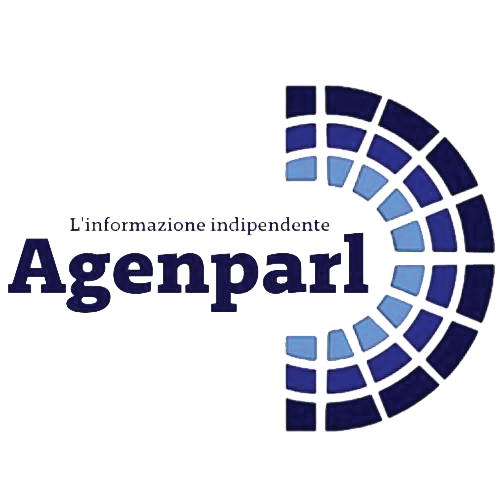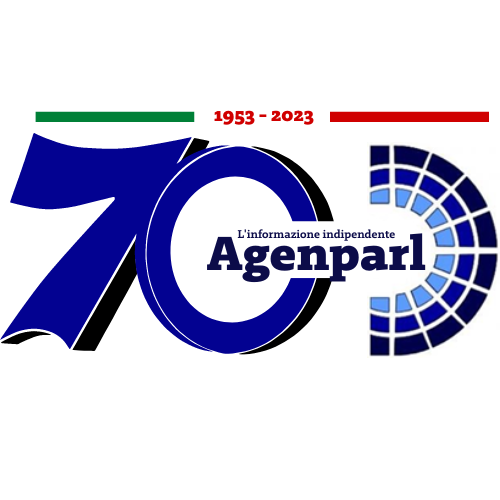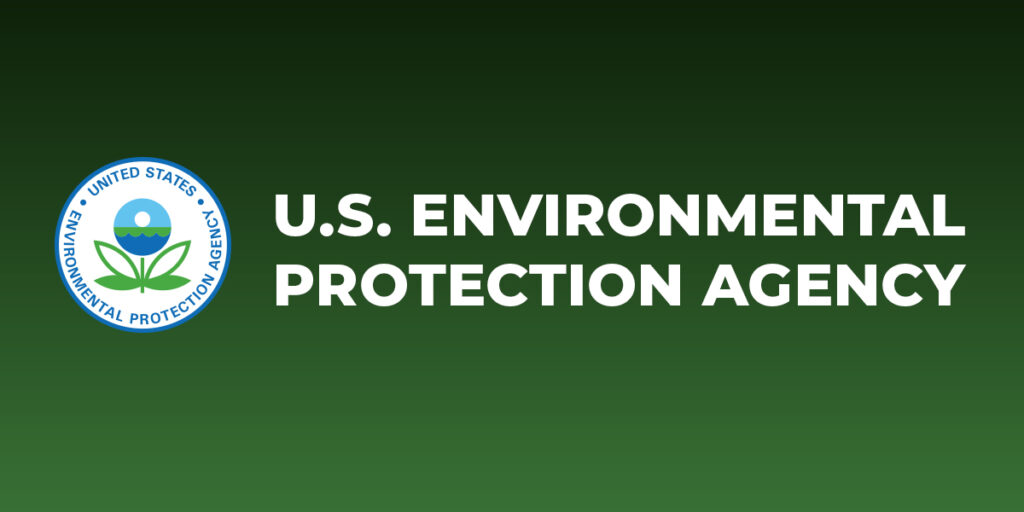 (AGENPARL) - Roma, 17 Agosto 2023
(AGENPARL) - Roma, 17 Agosto 2023(AGENPARL) – gio 17 agosto 2023 Issued: Aug 17, 2023 (4:21pm EDT)
If you wish to unsubscribe please do so
here: http://url6130.epa.mediaroom.com/ls/click?upn=-2BroytcZInNRyuFbAvAoN5aMEQDHIx2RtQl0jT-2FwLgZHafJKm-2F7NYrsKNAZH88rhd98aG2o5sSGIX8iVgGgXwOczi8WNFU0a7GLvUAvQ8R0QCtkuTI4WABymYAm345NQtJedT_mLoYh0p4AWg4foFr5HgrZ1QioQ33bLwdnQ-2BsYGKFX9mApcfdQmv0-2Bvkdf9kq-2BlYjMpAHQtkUAoWRbFZKDV71CDnCg5hbrMjtfKoYwNJYxKKApkOGs6NqtQI6MdAEP5vpVVh2UUbvLsJa9D4H2GubW6rgU8sH-2FFJKAwdb09OO2QRh4cAEfxfJPjEOrtL6VxwIKV8nYVJ5hpG7JfullCtjEaatvt8w2MSXAe7ekPeHFn5TUfAwcKOlTDVFcspiTd1nmeMkq0BO3ajG0k1G6lp4bw-3D-3D
EPA Announces Federal Enforcement Priorities to Protect Communities from
Pollution
New priorities tackle modern challenges including climate change, PFAS, coal
ash, air toxics, drinking water contamination, and chemical accidents, all
with a focus on achieving environmental justice
U.S. Environmental Protection Agency, Region 7 – 11201 Renner Blvd., Lenexa,
KS 66219
Iowa, Kansas, Missouri, Nebraska, and Nine Tribal Nations
LENEXA, KAN. (AUG. 17, 2023) – Today, the U.S. Environmental Protection
Agency announced its National Enforcement and Compliance Initiatives for
2024-2027, including for the first time initiatives to mitigate climate
change, address exposure to PFAS contamination, and protect communities from
cancer-causing coal ash. To advance the Biden-Harris Administration’s
commitment to protect disadvantaged communities, EPA also will integrate
environmental justice considerations into each of its National Enforcement and
Compliance Initiatives.
Every four years, across administrations, EPA selects enforcement and
compliance priorities so that the agency and its state partners can prioritize
resources to address the most serious and widespread environmental problems
facing the United States. In addition to climate change, PFAS contamination,
and coal ash initiatives, EPA is modifying its Clean Air Act initiative to
focus on hazardous toxic air pollution in overburdened communities in each EPA
region and is continuing its drinking water and chemical accident prevention
initiatives that began under prior administrations.
“EPA’s new national initiatives address urgent 21st century environmental
problems, while upholding the rule of law to level the playing field for
law-abiding companies and promoting a sustainable future for our children and
grandchildren,” said EPA Assistant Administrator for Enforcement and
Compliance Assurance David M. Uhlmann. “Working closely with our state
partners, EPA enforcement efforts will mitigate climate change and limit
exposure to the scourge of PFAS contamination, while addressing the reality
that, for too long in the United States, the worst effects of pollution have
plagued overburdened communities.”
In selecting initiatives for the FY 2024-2027 cycle, EPA used three criteria
to evaluate existing initiatives and to consider new initiatives: (1) the need
to address serious and widespread environmental issues and significant
noncompliance, particularly in overburdened and disadvantaged communities; (2)
a focus on areas where federal enforcement authorities, resources, and/or
expertise are needed to hold polluters accountable and promote a level playing
field; and (3) alignment with the EPA’s broader Strategic Plan, which
includes tackling the climate crisis and advancing environmental justice.
The 2024-2027 National Enforcement and Compliance Initiatives are:
Mitigating Climate Change – Tackling the climate crisis is an urgent priority.
EPA will use its enforcement and compliance tools to reduce greenhouse gas
emissions, helping to limit the worst effects of climate change. The
initiative will focus on three separate and significant contributors to
climate change: (1) methane emissions from oil and gas facilities; (2) methane
emissions from landfills; and (3) the use, importation, and production of
hydrofluorocarbons (HFCs). EPA has documented widespread noncompliance in all
three of these areas, resulting in potentially tens of thousands of tons of
unlawful emissions of greenhouse gases and other pollutants. This initiative
will help achieve EPA’s goals to combat climate change while also addressing
significant noncompliance in specific industry sectors.
Addressing Exposure to PFAS – Per- and polyfluoroalkyl substances (PFAS)
chemicals are toxic, persistent “forever chemicals” that have caused
widespread contamination in our air, water, and land throughout the country.
This initiative will focus on implementing EPA’s PFAS Strategic Roadmap and
hold responsible those who manufactured PFAS and/or used PFAS in the
manufacturing process, federal facilities that released PFAS, and other
industrial parties who significantly contributed to the release of PFAS into
the environment. Ensuring these entities properly identify and characterize
contamination, control ongoing releases, and comply with both existing and
future environmental requirements will help address this larger environmental
threat.
Protecting Communities from Coal Ash Contamination – This initiative will
focus on the threat presented by the hundreds of millions of pounds of coal
ash, also known as coal combustion residuals (CCR), found throughout our
country in on-site landfills, settling ponds, and other coal plant surface
impoundments. Coal ash, a waste product from burning coal for energy, contains
contaminants such as mercury, cadmium, chromium, and arsenic, which are
associated with cancer and other serious health effects. This initiative will
focus on the approximately 300 facilities nationwide that are collectively
responsible for approximately 775 coal ash units. Neighborhoods located near
these facilities are often communities with environmental justice concerns.
Reducing Air Toxics in Overburdened Communities – This initiative will
address the serious threat to communities that comes from unlawful exposure to
regulated hazardous air pollutants (HAPs) from nearby industry. Many of these
pollutants, such as benzene, ethylene oxide, and formaldehyde, are known or
suspected to cause cancer or other serious neurological, reproductive,
developmental, and respiratory health effects when breathed or ingested
through the food chain, including harm to children. This initiative will seek
to target, investigate, and address noncompliance with clean air standards
designed to protect public health, with a focus on sources of HAPs in
communities already highly burdened with pollution impacts.
Increasing Compliance with Drinking Water Standards – This initiative seeks
to ensure that the approximately 50,000 regulated drinking water systems that
serve water to residents year-round, referred to as Community Water Systems
(CWSs), comply with the Safe Drinking Water Act (SDWA). Each year thousands of
CWSs continue to violate one or more drinking water standards, exposing
millions of people to potential health risks. During the next four years, EPA
will ramp up its field presence, take impactful enforcement to increase
compliance, and offer more compliance assistance to prevent and address public
health risks.
Chemical Accident Risk Reduction – This initiative seeks to reduce the
likelihood of catastrophic chemical releases, and to address the problem of
avoidable chemical incidents that continue to occur throughout the country.
Thousands of facilities nationwide make, use, and store extremely hazardous
substances. Disastrous fires, leaks, and explosions at these facilities can
result in fatalities and serious injuries, evacuations, shelter in place
orders, toxic exposure, and other harm to workers, first responders, and
neighboring communities. EPA has found significant noncompliance with
companies who handle extremely hazardous substances and will target companies
that choose not to comply with risk management requirements established to
protect public health and safety from extremely hazardous chemical
releases.
To help inform the selection of the FY 2024-2027 NECIs, EPA solicited public
comment via a Federal Register notice to provide ample opportunity for
stakeholder input. EPA also considered input on this cycle of NECIs from
states, territories, and Tribes, as well as from the public, environmental
groups, and regulated entities.
Learn more about EPA’s NECI’s for FY 2024-2027.
# # #
Learn more about EPA Region 7
To unsubscribe or change your settings click here:
http://url6130.epa.mediaroom.com/ls/click?upn=-2BroytcZInNRyuFbAvAoN5aMEQDHIx2RtQl0jT-2FwLgZFdW2WYdzQmaasDKJ3YChU38sLKdqs91aLiKMKy50RE1qbOiZ-2FOTP33IHr48Nufe6wWDkJEQkt2pgrGc17dqqrSFoPEfreKAC88o7tFTU-2F-2BsQ-3D-3DanSR_mLoYh0p4AWg4foFr5HgrZ1QioQ33bLwdnQ-2BsYGKFX9mApcfdQmv0-2Bvkdf9kq-2BlYjMpAHQtkUAoWRbFZKDV71CDnCg5hbrMjtfKoYwNJYxKJ8Q1Lbw11RUh-2Fcexu4wrcVRk4gxjy9qYfIKvxbAHc7fdcoqga8dbRISJ4FqdilKpcZXz0p5Y-2BQ6VBbFZ0bX1b4bwOqEg0kkthMKu2ukrof3GjerFcVCW1Wz-2BgPv0IF4Qc3k5kUuKMkWVkreaGf3typhkx3bB6GVoPqEkh3aIxEfA-3D-3D

